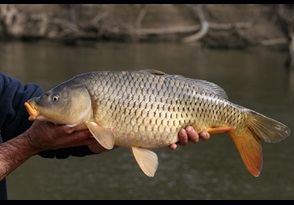Australia now has key information for controlling carp, Cyprinus carpio, one of the world’s most destructive pests. For the first time, there’s an estimate of carp biomass across the continent (carp biomass means the weight of carp).
This key information can directly guide the best approaches to control this scourge to our waterways.
“The Carp Biomass Project is a unique collaboration of scientists and government agencies across Australia. It has brought together a wealth of information - fish survey data from over 150 studies and 4831 sites, across 24 years”, says project leader, Dr Jarod Lyon, from the Arthur Rylah Institute for Environmental Research in Victoria.
The national estimate of carp biomass for May 2018 is 205,744 tonnes with a lower and upper limit of 117,532 and 356,482 tonnes, respectively. If these carp were loaded into utes they would stretch from Melbourne to Newcastle.

This biomass estimate represents a single ‘point in time’. Carp biomass varies significantly between years, depending on how wet conditions are. During a single wet year, such as May 2011, the carp biomass estimate was 368,357 tonnes, with a lower and upper limit of 184,234 and 705,630 tonnes, respectively. After a series of three flood years, additional modelling suggests carp biomass may reach a maximum of 1,200,000 tonnes.
“This work has provided us with a key understanding of how this highly adaptable pest can respond to different environmental conditions” says Dr Lyon.
The project estimated carp biomass across the diverse range of aquatic environments, from individual wetlands to large river reaches. A national map of aquatic environments was created which will now provide an invaluable planning tool for managers.
A major project outcome is that sites where carp biomass is high enough to cause significant environmental damage can now be identified. This means carp management resources can be allocated where they are most needed.
The biomass project has brought together rigorous science, scrutinised existing survey information, and confirmed carp biomass estimates through field experiments. This approach can greatly inform the development of biomass estimates for other animals, both pests and native.
This research project forms an essential part of the National Carp Control Plan (NCCP), a $10.2 million program led by the Fisheries Research and Development Corporation, on behalf of the Australian Government. The NCCP aims to address two questions: Is it feasible to release the carp herpes virus to control carp, and if so, what is the most effective way to release and manage the virus?
The NCCP will be delivered to the Australian Government in December 2019. The Australian Government will then decide on the next steps.
---
Contact: Ilaria Catizone, ilaria.catizone@frdc.com, M. 0404 255 321





